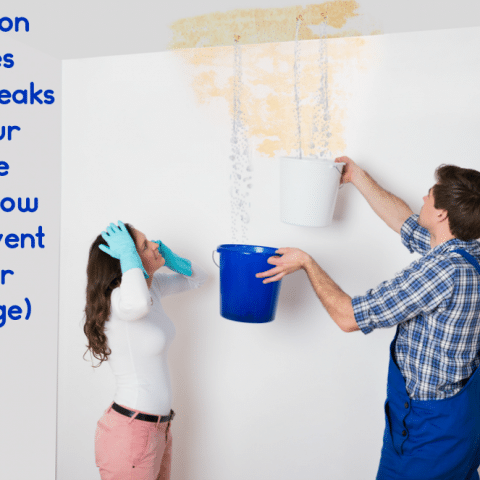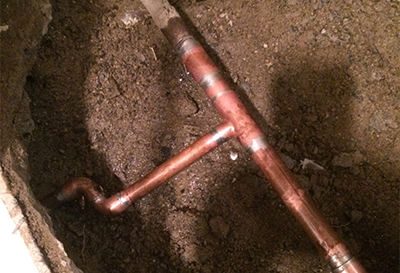This article in the next paragraphs about Locating water leaks is truly motivating. You should check it out.

Early discovery of dripping water lines can alleviate a possible calamity. Some small water leaks may not be visible.
1. Check Out the Water Meter
Every residence has a water meter. Examining it is a guaranteed manner in which assists you find leakages. For beginners, switch off all the water sources. Ensure nobody will flush, utilize the tap, shower, run the cleaning maker or dish washer. From there, go to the meter and also watch if it will transform. Since no person is using it, there should be no motions. If it moves, that indicates a fast-moving leak. If you find no changes, wait a hr or 2 and check back once more. This means you might have a slow leak that can also be below ground.
2. Inspect Water Consumption
Analyze your water expenses and also track your water usage. As the one paying it, you need to observe if there are any kind of inconsistencies. If you detect sudden changes, in spite of your consumption coinciding, it implies that you have leaks in your plumbing system. Keep in mind, your water costs ought to fall under the exact same variety monthly. An abrupt spike in your expense suggests a fast-moving leak.
At the same time, a consistent rise monthly, despite having the same routines, shows you have a sluggish leakage that's additionally gradually rising. Call a plumber to thoroughly inspect your residential property, specifically if you really feel a cozy location on your floor with piping below.
3. Do a Food Coloring Examination
When it pertains to water usage, 30% originates from toilets. Examination to see if they are running correctly. Drop flecks of food shade in the container as well as wait 10 minutes. There's a leak between the container and also dish if the shade in some way infiltrates your bowl during that time without flushing.
4. Asses Outside Lines
Do not fail to remember to inspect your exterior water lines as well. Ought to water permeate out of the link, you have a loosened rubber gasket. One little leakage can throw away loads of water as well as increase your water expense.
5. Inspect as well as Assess the Scenario
House owners must make it a practice to check under the sink counters and also inside cabinets for any kind of bad odor or mold development. These 2 warnings show a leakage so punctual interest is required. Doing regular inspections, also bi-annually, can conserve you from a significant problem.
If you understand your home is currently old, keep a watchful eye on your heating units, tubes, pipes etc. Check for stainings as well as deteriorating as many devices and pipes have a life span. They will also naturally deteriorate because of tear and also wear. Do not wait for it to rise if you think dripping water lines in your plumbing system. Call an expert plumber immediately so you do not end up with an awful mess in your house.
Early detection of leaking water lines can minimize a possible calamity. Some little water leakages might not be noticeable. Inspecting it is a proven means that helps you discover leaks. One tiny leak can squander bunches of water and also surge your water expense.
If you think leaking water lines in your plumbing system, don't wait for it to escalate.
How to Know If Your Home Has a Hidden Leak
Water Meter Reveals Inexplicable Water Usage
If you’d like to test whether or not there’s a leak somewhere in your home, you can do this using your water meter. Here is how to conduct the test:
Don’t use any water in your home for at least 30 minutes; this also means not turning on faucets or water-using appliances.
Go outside, and check your water meter for activity.
If your water meter shows that there was activity, even though no one was using any water, this proves that there is a leak in your home.Visible Mold or Mildew Growth
Leaks behind walls create moist, dark environments that allow mold and mildew to grow and thrive. Eventually, you might see mold growth forming on the wall closest to a hidden leak.
If mold is growing in an area that receives a high amount of moisture, such as a bathroom, it may simply be an indication that better ventilation is needed. However, if you see mold growth on a wall or the ceiling in an area where you would not expect, you probably have a hidden leak.
Musty, Mildew Odor
Sometimes you might not be able to see the mold or mildew that is growing as a result of a leak. However, the smell can give the problem away just as easily. If you catch a whiff of something musty, there’s a good chance that old water is collecting somewhere in your home that you can’t see.
Stained/Warped Walls, Ceilings, or Floors
When your home soaks up water, a variety of red flags can become visible, including ceiling stains, bubbling drywall, warped walls, and sagging floors. While these issues can be caused by excess humidity, they can also be signs that a pipe or plumbing connection has started leaking behind your walls.
Inexplicably High Water Bill
After a while, you get a general sense for what your water bill should be. If you own a pool or sprinkler system, your bill will tend to be higher during summer. However, if you receive a water bill that seems especially high, and you can’t figure out what caused it, then you may have a hidden leak somewhere that’s increasing your bill.
https://www.plumbingjoint.com/blog/2019/july/how-to-know-if-your-home-has-a-hidden-leak/

Do you like more info about Finding hidden leaks? Give a remark down the page. We would be interested to hear your responses about this write up. Hoping that you visit us again in the near future. I beg you set aside a second to share this page if you enjoyed it. Thank you so much for going through it.